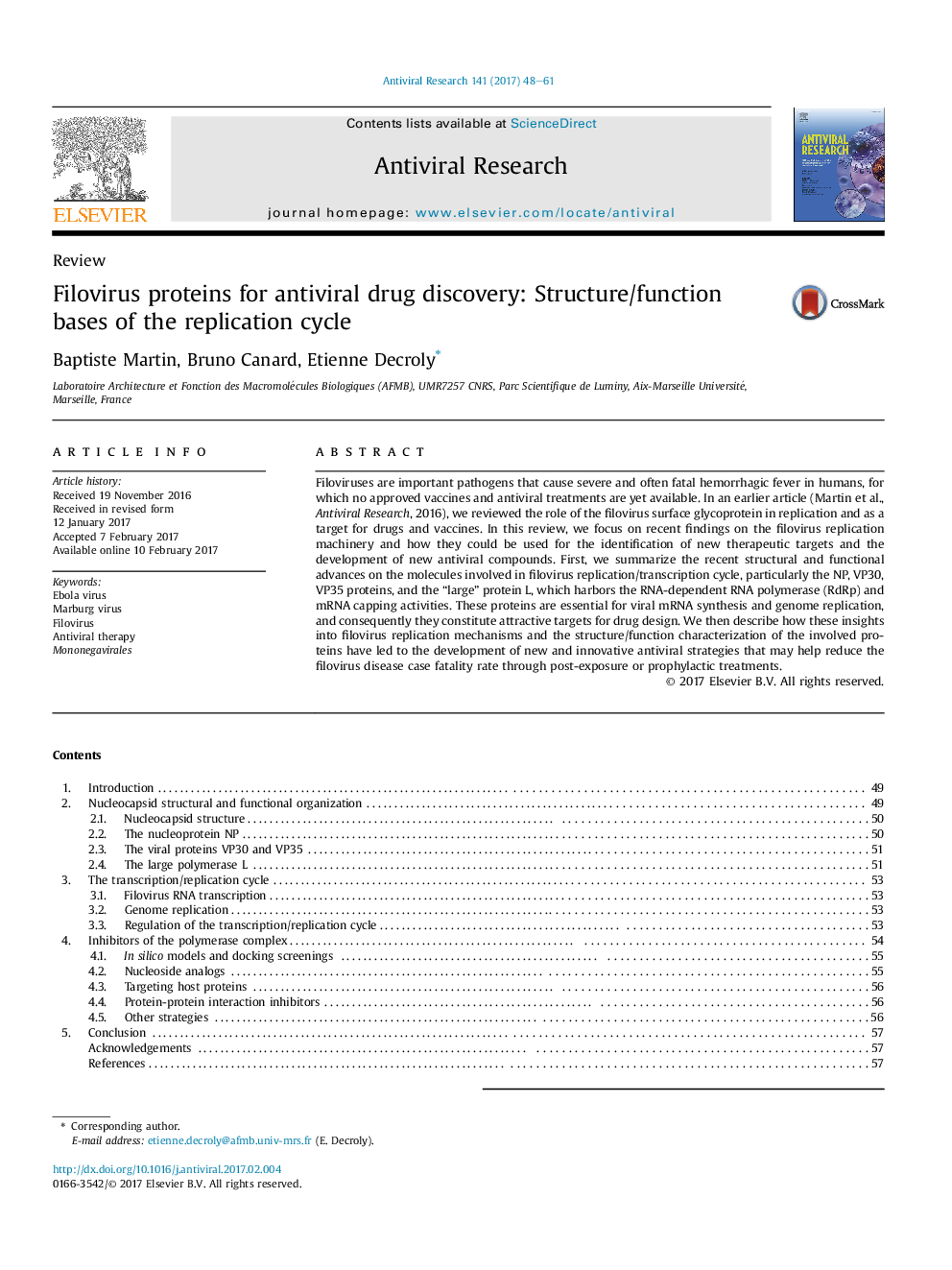| Article ID | Journal | Published Year | Pages | File Type |
|---|---|---|---|---|
| 5551798 | Antiviral Research | 2017 | 14 Pages |
â¢Filovirus nucleocapsids contain all proteins required for genome replication and mRNA transcription.â¢Transcription/replication of filoviruses reveal original mechanisms that are unique in the order Mononegavirales.â¢Innovative antiviral strategies targeting filovirus replication emerge from the fine knowledge of the filovirus replication.
Filoviruses are important pathogens that cause severe and often fatal hemorrhagic fever in humans, for which no approved vaccines and antiviral treatments are yet available. In an earlier article (Martin et al., Antiviral Research, 2016), we reviewed the role of the filovirus surface glycoprotein in replication and as a target for drugs and vaccines. In this review, we focus on recent findings on the filovirus replication machinery and how they could be used for the identification of new therapeutic targets and the development of new antiviral compounds. First, we summarize the recent structural and functional advances on the molecules involved in filovirus replication/transcription cycle, particularly the NP, VP30, VP35 proteins, and the “large” protein L, which harbors the RNA-dependent RNA polymerase (RdRp) and mRNA capping activities. These proteins are essential for viral mRNA synthesis and genome replication, and consequently they constitute attractive targets for drug design. We then describe how these insights into filovirus replication mechanisms and the structure/function characterization of the involved proteins have led to the development of new and innovative antiviral strategies that may help reduce the filovirus disease case fatality rate through post-exposure or prophylactic treatments.
